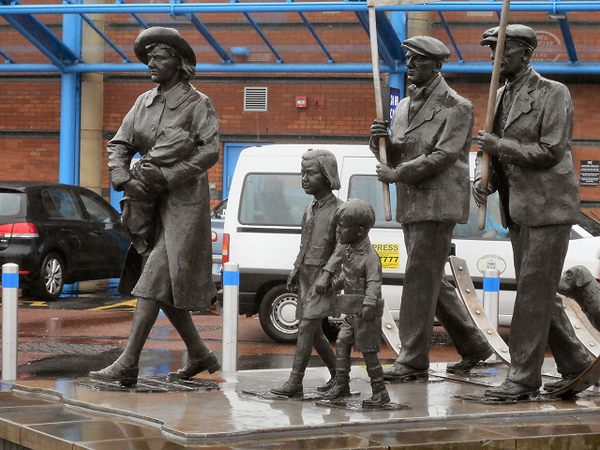On October 5, 1936, 200 men from Jarrow in Northumberland, England, began a protest march to Parliament to call for economic assistance in northeast England. Taking place during an economic depression, the march took 26 days and covered 282 miles. Today, the historic protest is known as the Jarrow March.
Northumberland and northeast England had long been a center of shipbuilding and steel manufacturing, but in 1936 thousands were unemployed, nearly 80% of all workers at its peak.
David Riley, who was head of the Jarrow council, and Ellen Wilkinson, a local member of Parliament, led the crusade.
The demonstration is often described as a “Hunger March” and has become a landmark event in British organized labor and radical politics.
The marchers arrived in Westminster close to the opening of Parliament, where they presented a petition signed by 12,000 residents of the town of Jarrow. Supporters in towns and villages hosted the crusaders. And at the end of each day’s march, Ellen Wilkinson made a speech at a public meeting.
Instead of listening to Riley and Wilkinson’s demands, the government cut off the marcher’s unemployment benefits, claiming the crusaders had been unavailable for work during their 26-day protest.
The Jarrow March has gone on to inspire numerous artists, and an opera, two musicals, three pop songs, five plays, and several works of art have been created about the event.
Although the Jarrow Crusade is a widely remembered and oft-celebrated celebrated event, it had little effect on the government in the short term.
Despite a temporary boost from World War II, shipbuilding and steel manufacturing slowly disappeared from Jarrow and nearby South Shields and is nearly nonexistent today.
In honor of the 65th anniversary of the Jarrow Crusade, sculptor Graham Ibbotson created a commemorative bronze in 2001. The sculpture was installed in the parking lot of the Viking Shopping Center, near Jarrow town center. Ibbotson entitled the piece The Spirit of Jarrow.
Situated on a brick plinth, the bronze depicts two marchers carrying a banner proceeded by a woman, two children, and a mongrel dog which became a mascot of the march.
In reality, the Jarrow marchers were selected from the “fit-men” of the town and no children took part. Apart from Ellen Wilkinson, women did not take part directly in the march, but played a crucial supporting role.
These edits were intentional: Ibbotson strove to represent the wider political “crusade” rather than just the march itself.
In The Spirit of Jarrow, bronze figures are depicted walking through the ribs of a steel vessel as if it were under construction. There are also various depictions of the tools used by local skilled workers.



